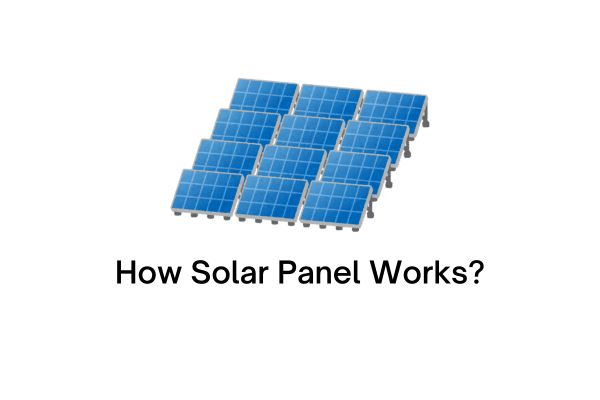What is solar panel and how solar panel works? Solar panels are a set of tools with semi-conductor materials that can convert the energy of sunlight received into electrical energy. Solar panels are also called photovoltaics and are made of semi-conductor materials which are generally silicon.
Solar panels are used as a tool to convert sunlight containing photon energy to be converted into electrical energy. Photovoltaics are tools that function to change or convert solar energy into electrical energy.
Daftar Isi
How Solar Panels Work
Solar panels work based on the photovoltaic principle, namely by converting photon energy from the sunlight radiation received into electrical energy.
Silicon consists of 2 layers in it, namely the n (-) layer and the p (+) layer. The n layer is the layer that is above the surface of the solar panel and is directly related to sunlight, while the p layer is below the n layer which is separated by a gate (junction).
This gate will open when sunlight shines on the surface of the solar panel. The opening of the gate between layers causes the resulting electrons to flow.
The amount of energy produced by solar panels depends on the available solar energy, which in particular depends on the direction of the solar module to the sun. When the solar panel receives input in the form of sunlight intensity, it will be able to produce current.
The amount of current produced by the solar panel is directly proportional to the intensity of sunlight entering the solar cell. The intensity of sunlight changes according to the shift in the position of the sun.
Problems with Using Solar Panels
Solar panels are materials made of semiconductors that can convert solar energy into electrical energy. The main problem with using solar panels is that the output power produced by the solar panel depends on the intensity of light that can be captured by the solar panel.
The intensity of light captured by the solar panel is directly proportional to the output power produced. In other words, the greater the intensity of radiation captured by the solar panel, the greater the output power that can be produced by the solar panel.
Improper installation of solar panels will result in a lack of radiation intensity captured so that the solar panel produces less than maximum output power.
Solar panels will capture maximum solar intensity if they are perpendicular to the incoming sunlight. This can be achieved by adjusting the angle of inclination of the solar panel and the direction of orientation of the solar panel.
In setting the angle of inclination and direction of orientation of the solar panel, the position of the sun is used as a reference to determine the optimal solar panel settings.
To determine the optimal angle of inclination and orientation of the solar panel, it can be done by measuring the maximum output power that can be produced by the solar panel for each setting.
Another method that can be used is to calculate the position of the sun in relation to the location of the solar panel installation to determine the angle of the incoming sunlight so that the optimal angle of inclination of the solar panel and the direction of the solar panel orientation can be determined.
Solar Panel Operation Factors
The amount of output power that can be produced by a solar panel depends on several factors as follows:
1. Effect of Changes in Solar Irradiation
If the amount of sunlight energy obtained by the solar cell decreases or the light intensity weakens, then the amount of voltage and electric current produced will also decrease. The decrease in voltage is relatively smaller than the decrease in electric current.
2. Effect of temperature changes on solar panels
The temperature of the solar panel also affects cell performance and efficiency. The voltage generated from the solar cell depends on the temperature of the solar cell, the higher the temperature of the solar cell, the voltage decreases.
3. Wind speed blowing around the location of the solar panel installation
The stronger the wind blowing, the faster it helps the cooling process on the surface of the solar panel temperature, causing the surface temperature of the solar panel to be lower.
If the surface temperature of the solar panel is lower, the voltage produced by the solar panel will also be greater, and vice versa if the wind blowing around the solar panel is low, the output voltage of the solar panel will be lower because the temperature of the solar cell becomes high.
4. Condition of the earth’s atmosphere.
The condition of the earth’s atmosphere that affects the output power of solar panels is the weather, sunny, cloudy, type of air dust particles, smoke, water vapor, air, fog and air pollution also determine the maximum results for the electric current produced by solar panels.
5. Optimal orientation of solar panels towards the sun
Solar panels located in the northern hemisphere should be oriented 00 facing south facing the equator to receive the highest solar radiation.
Conversely, solar panels installed in the southern hemisphere should be oriented 1800 facing north facing the equator so that the solar panels can get the highest solar radiation.
6. Angle of incidence of the sun (tilt angle)
The solar radiation received by the solar panels can be maximized if the angle of incidence of the sun to the solar panels is 900. So the installation of solar panels must be installed at an angle of inclination in such a way that the angle of incidence of the sun received by the solar panels can be maximized.
Read Also:
